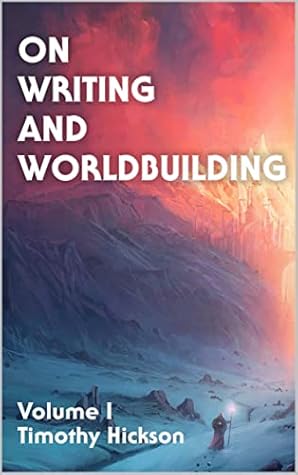More on this book
Community
Kindle Notes & Highlights
“Expand on what you already have before you add something new.”
“Epic fantasy has space for looking at history and economics, while a tight urban fantasy may instead want to look at one specific factor—such as how synthetic blood might affect vampire culture.”
the fewer the characters, smaller the world, and shorter the book, the narrower the question might be.
the more consequential the character change or greater the power, the more it should be foreshadowed beforehand or it risks feeling cheap and unearned.
A magic system cannot exist in isolation.
Your magic system is a source of conflict unique to your story, and as an author, you can capitalise on that.
PART XII POLYTHEISTIC RELIGIONS
Summary
While many real-world religions focus on the three questions of how the world came to be, how we should interact with one another, and where we go when we die, that does not mean your fictional one has to answer all or any of them.
Polytheistic religions tend to result in a lot variation in religious belief as people divide into groups that emphasise certain gods for geographical, cultural, and economic reasons.
Polytheistic religions tend to be more adaptable and can absorb other religions into them, allowing them to evolve over time.
show how it affects ordinary people culturally on an ordinary daily basis.
Polytheistic religions tend not to compete with regional powers as much as monotheistic religions
Demonstrating how these polytheistic groups all fit into society, and the economy in particular, is a great way to show the diversity of values and beliefs surrounding each god.
Where gods live and die by worship, this can be a great source of conflict within the narrative as factions compete or undermine one another.
do not be afraid to mix religious models and tropes.
PART XIII HIDDEN MAGICAL WORLDS
Because of this, the struggle of the hidden world is not eliminating the chance that people let the word out, but minimising the motivation to do so.
Summary
The more your hidden people can blend in, the less they will need extreme magic or technological hiding strategies,
The more geographically isolated they are, the more an ‘us vs. them’ mentality will evolve with stereotypes that go unchallenged.
The less accessible, more difficult, and more morally grey the method is, the harder it will be to use it to sustain the masquerade.
the more separate it is from the ‘normal’ society, the more distinct its political setup will become.
The smaller a hidden world is and the more geographically isolated and close-knit it is, the lower the risk of discovery with fewer chances for word to get out and the higher the risk of being caught.
PART XIV HOW EMPIRES RISE
Summary
Empires are often driven by resources. Where certain resources are found determines where they expand to, the type of economy helps determine how they do so, and the climate and geography of the homeland are both factors to consider.
Empires are often driven by security in uniting their people or taking over enemy lands to protect themselves.
Empires are often driven by nationalism in the wake of strife or prosperity.
Empires nearly always have a tactical or technological advantage against those they absorb.
PART XV HOW EMPIRES WORK
There are three different relevant types of communication: Between the different governmental powers across the empire Between government and citizens Between citizens across distances—which we will get to in our part on control.
Military
With larger borders than a usual state, quick and effective communication in the military is vital to bringing forces from across the state to combat rivals.
Resources
Without the ability to coordinate resources during times of drought and famine, an empire will become prone to riots, chaos, and even rebellion.
Citizens
Finally, communication to citizens is vital to the coordination of economic or governmental policy and its implementation:
what matters is the speed and amount of information that can easily travel. This has two important effects on: the effectiveness of central decision making. stability and the desire for self-governance.
What matters, above all, is that the people feel that when issues around their home are raised, they are actually heard and addressed.
perhaps showing how your empire regulates and protects commerce would establish it as a realistic empire through a unique lens.
Summary
speed and amount of communication across an empire is vital to effective coordination. This can be altered by magic or technology.
consider how the magic system affects how the government works and the challenges that it faces.
The capacity to mobilise troops quickly and coordinate resources is crucial to control.
A healthy economy is an indicator of stability for an empire,
Successful empires often protect property rights and facilitate trade.
Empires change in culture, economy, politics, and religious makeup,
PART XVI HOW EMPIRES FALL
Positive assimilation: this is where unifying cultural practices are added to the lives of foreigners to help them identify with the culture of the empire.


